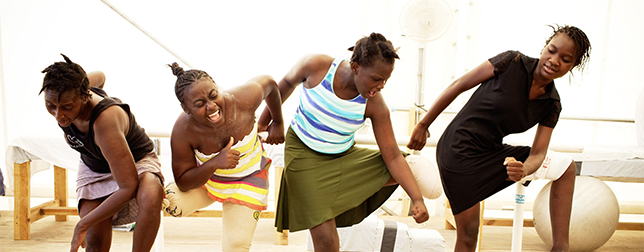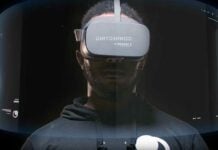Handicap International supports people with disabilities and other vulnerable populations living in conflict and disaster zones and in situations of exclusion and extreme poverty. The NGO is Co-winner of the Nobel Peace Prize and will be one of the highlights of our WT | Wearable Technologies Conference that will be held on February 2-3, 2015 in Munich (Germany). Patrick Hoese, Senior Corporate Advisor at Handicap International answered a few questions for us prior to the event.
Who founded Handicap International and what was the original purpose of its foundation? Is the organization still pursuing the same goals as in the beginning or did your change or add goals?
Handicap International is a Non-Profit Organization which was founded by two French doctors in Thailand in 1982. Initially to provide rehabilitation for landmine survivors living in refugee camps in Cambodia and Thailand the work of Handicap International extended to support disabled and vulnerable people to meet their basic needs, improve their living conditions and to promote respect for their dignity and fundamental rights. In around 60 countries worldwide Handicap International has supported several million people in it’s over 30 year’s existence in the field of emergencies, landmine and cluster munitions, rehabilitation, health, inclusion and disability rights information.
You will be presenting in the “Extending the Body” session of the conference. The artificial limbs that Handicap International is providing can be understood as body parts that extend people’s bodies. Are you also working with electronically enhanced limbs and portable or even wearable devices in one of your projects?
Handicap International concentrates on techniques which are available in the field and are chosen according to the local context. The aim is to install local capacities for rehabilitation. But, an artificial limb alone doesn’t change the life of an amputee. Therefore the approach to rehabilitation is based on the recognition of individual needs, taking into account a person’s individual situation as far as their environment and the local services available. In most of our cases low-tech solutions will be the first choice. At present Handicap International does not use electronically enhanced limbs or wearable devices.
What kind of partners are you looking for from the electronics industry?
Handicap International is open for innovative ways to help people in need by supplying them with simple and effective easy to use medical support. The technology should be developed according to the circumstances people are facing. Examples are prosthesis for rice-farmers or for people who need to climb up a ladder. An important aspect is if beneficiaries will be able to visit rehabilitation facilities regularly.
Can you give us a brief outlook on what Handicap International will be presenting at the WT | Wearable Technologies Conference in February?
The variety of the world-wide work of Handicap International will be presented using stories from the field. Showing that in very poor countries still a simple and easy to use solution is the best help people can get. But, with the entry of the internet and smartphones new ways of treatment will be possible in the future for people injured as a result of war or natural disasters or who are affected by disabling diseases such as polio.















